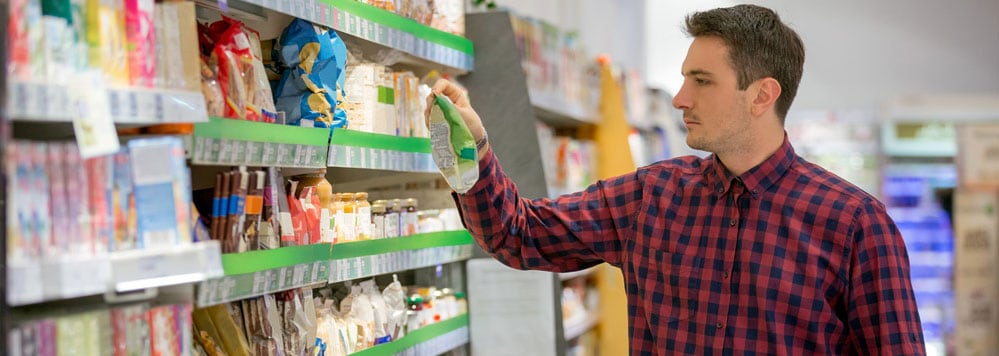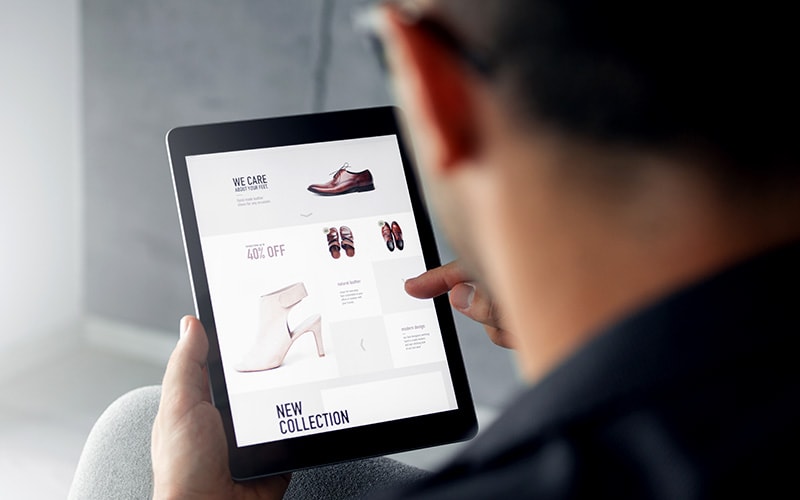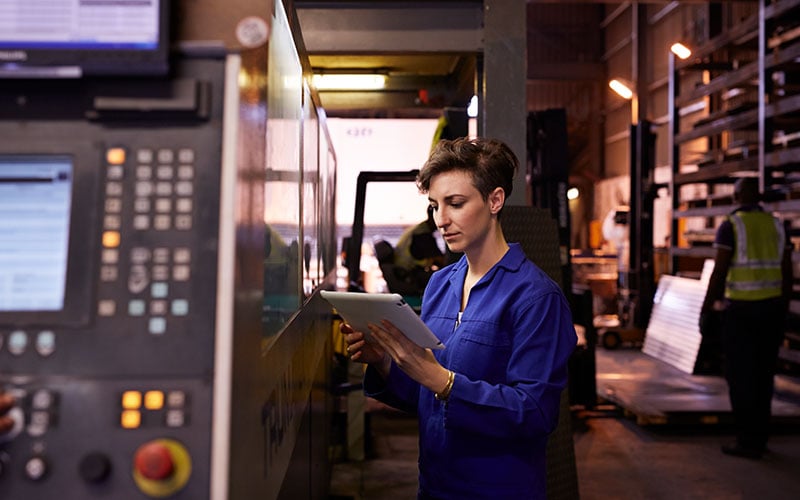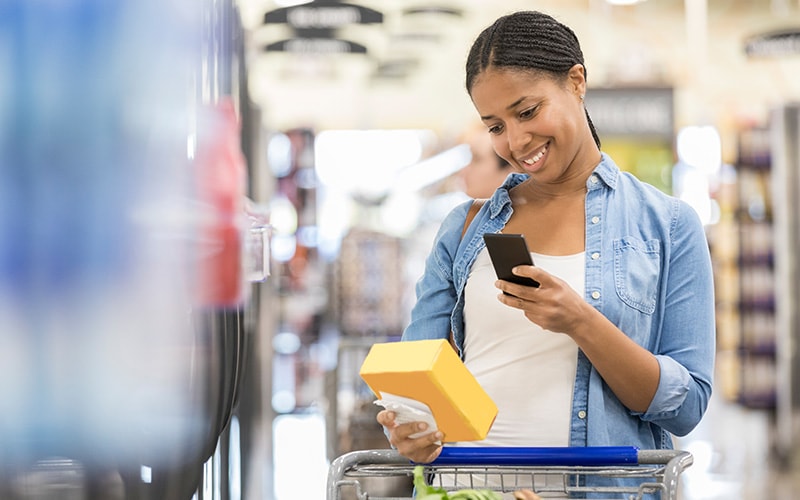In 2018, Amazon’s net sales were $232.9 billion.1 To put it in perspective, that worked out to be 45.44% of all U.S. digital commerce sales.2 But as Amazon founder Jeff Bezos admits, the company remains “a small player in global retail.”3 In 2018, physical retail market sales were $5,322.63 billion in the U.S.2 That represented 90% of the total retail market — a great prize if Amazon could capture part of it.
As an online leader moving into physical retail, Amazon makes a great case study of how to build a harmonized retail strategy.4 We define harmonization as the intersection of physical layouts, digital technologies and human experiences (Figure 1). So far, Amazon’s impact has primarily been at the intersection of digital tech and human experiences. But that is changing.
Figure 1. Amazon’s brand is defined by strong digital commerce and cloud capabilities

Source: Infosys, 2019
Historical timeline
Figure 2. Amazon’s evolution to harmonize physical retail

Source: CNN Business5, 2019
Financial performance
Amazon’s revenue rose to $232.89 billion in 2018, from a single-digit figure of $8.49 billion in 2005. In the five-year period from 2013-2018, Amazon grew by 212.81% (Figure 3).
Figure 3. Amazon’s surging revenue growth year-over-year
According to Yahoo Finance, since Amazon’s initial public offering in 1997, its stock price surged from $5 per share to around $1,900 per share in 2019. The stock price has grown exponentially over the years. No other retailer comes close to Amazon in the stock price race. There’s a huge gap between the average stock prices of the top five retailers and Amazon’s, with the Dow Jones Industrial average trailing far behind (Figure 4). Amazon is ahead of other retailers in digital disruptions and has surpassed all expectations through its rapid growth, especially from 2016 to 2019.
Figure 4. Amazon’s exponential growth in share price is unmatched by any other retailer
Harmonized retail strategy
Amazon became an e-commerce leader about twenty years ago but waited until 2012 to target the physical retail market. At this point, Amazon invested in retail bookstores as a largely reactive strategy. The company started opening bookstores after being blamed for the decline of independent bookstores across the United States. At this point, Amazon lacked a harmonized retail strategy to prioritize physical retail investments and target the physical retail market.
Amazon’s reactive strategy was also evident in the way it categorized its revenue from the physical retail space. There was no revenue category for its physical bookstores from 2012 until 2017. The company’s acquisition of Whole Foods in 2017 marked a positive shift to harmonization in Amazon’s balance sheets from 2017. In 2017, the net sales from physical stores was $5.8 billion.6
Amazon classifies revenue into six categories (Figure 5). Physical store sales are calculated as revenue from items that are physically selected at stores. Amazon’s Whole Foods acquisition mainly contributed to its 2018 revenue in physical stores, which was $17.2 billion.
Figure 5. Amazon opened its physical-store sales account in 2017
| Net sales | Year ended December 31, 2018 (Amount in millions of $US) | ||
| 2016 | 2017 | 2018 | |
| Online stores | 91,431 | 108,354 | 122,987 |
| Physical stores | ---- | 5,798 | 17,224 |
| Third-party seller services | 22,993 | 31,881 | 42,745 |
| Subscription services | 6,394 | 9,721 | 14,168 |
| AWS | 12,219 | 17,459 | 25,655 |
| Other | 2,950 | 4,653 | 10,108 |
| Consolidated | 135,987 | 177,866 | 232,887 |
Source: Amazon7, 2019
Physical store sales are forecasted to grow from $17.2 billion in 2018 to over $29 billion by 2020. The physical stores segment is expected to contribute around 14% of Amazon’s overall revenue growth during this period.8
Amazon is placing its bets on physical stores expecting about 14% revenue boost from this segment which is likely to grow to over $29 billion by 2020
Amazon’s investments in this area cover a number of different retail stores:
| Amazon Books: Customer-favorites, top sellers and new book releases. |
| Amazon 4-Star: A mix of customers’ favorite products in all categories, rated four stars or higher on Amazon.com. |
| Amazon Go: Ready-to-eat breakfast, lunch and snack foods. The store is set up with technology that eliminates the need to check out. Customers just grab their items and go. |
| Amazon Pop Up: The hottest items from Amazon.com sold in shopping malls, Whole Foods and Kohl’s across the United States. |
| Amazon Treasure Truck: One hand-picked item at a time is texted to customers who sign up. People who purchase that item select a location to pick it up that day. The treasure truck moves around and the pick-up locations change every day. |
At all of the Amazon stores, Prime members pay the same price they would online at Amazon.com.
Merchandise and physical retail partnerships
Amazon’s top five merchandise categories are electronics, apparel and footwear, home and kitchen, beauty and personal care, and books (Figure 6). Forty-four percent of Amazon shoppers in the U.S. bought electronics, followed by a close 43% who bought clothing, shoes and jewelry.
Figure 6. Electronics, clothing, shoes and jewelry are top merchandize categories
Amazon’s differentiation in physical stores came about through its Amazon Go innovation. The store uses advanced shopping technology such as artificial intelligence and image recognition software. Customers simply grab the items they want and go, without waiting in line to check out. You do need to have the Amazon Go app to make this work. Some critics say by requiring the Amazon Go app to make a purchase in the store, Amazon is excluding people without a smart phone or credit card. The Amazon Go store that opened in New York City in May 2019 has one cashier to check out customers who don’t have the app. According to reports, Amazon plans to open up to 3,000 Amazon Go stores by 2021.10
Figure 7. Increasing share of third-party physical merchandise on Amazon
Amazon is increasing its physical presence, making in-person pick-ups and returns easier without the operational costs of running a retail store. It’s a great partnership for brick-and-mortar stores that need the foot traffic. It is a win-win situation. Here are a few examples:
- Kohl’s - Amazon partnered with Kohl’s to enable Amazon customers to return packages at Kohl’s stores free of charge. This has been beneficial for Kohl’s as well. In our previous paper, “3 Ways Physical Retail Can Capture a Slice of $4 Trillion” 12 we explored how Kohl’s stores accepting Amazon returns saw a 9% increase in new and younger customers — compared to a paltry 1% in other locations.
- Rite Aid - Amazon added parcel pickup to more than 100 Rite Aid stores in the U.S. with a program called “Counter.” This program launched in the UK with NEXT stores and in Italy with Giunti Al Punto Librerie, Fermopoint and SisalPay stores. In the U.S., the service is expected to be available at an additional 1,500 Rite Aid stores apart from expansion into thousand other locations with new partners GNC, Stage Stores and Health Mart.13
- Best Buy - Customers in the U.S. and Canada will benefit from this multiyear partnership to sell new smart TVs that run on Amazon’s Fire TV operating system in Best Buy stores. The Best Buy and Amazon buyers group dominates electronics and aligns well with this strategy (see Figure 6).
Harmonization goes beyond physical retail
The key differentiating factor for Amazon, irrespective of the channel, is its broad range of products, competitive prices, and most importantly, its effective delivery capabilities. As Bezos says, “In our retail business, we know that customers want low prices, and I know that’s going to be true 10 years from now. They want fast delivery; they want vast selection.” 14
Our previous paper, “Resurrecting the Physical Store Through Harmonized Retail” 15 details the different building blocks of harmonized retail: attract, engage, explore and select, check out and deliver.
Amazon is mainly focusing on the “engage” and “deliver” blocks to reach closer to the customer.
Amazon’s goal is the moment a customer purchases something, it should already be most of the way to their door. This year, Amazon has upped its game by announcing free, one-day shipping on more than 10 million items for its Prime members. Amazon says overnight delivery will be the norm in the future — not just for big cities, but everywhere, and that is a world-changing idea.
Harmonization has helped Amazon in further strengthening this capability. By its foray into the physical retail domain, Amazon has moved its warehouses and fulfillment centers closer to the customer — so orders can be delivered in hours instead of days. Amazon is also testing a drone delivery system — Prime Air — to further reduce the delivery time from hours to minutes.16
What sets Amazon apart from its competitors is its vast product range, competitive prices, and a strong delivery channel
Harmonization is also helping Amazon engage better with its customers through contextualized product recommendations. While decisions in retail are usually 80% gut and 20% data, Amazon is redefining this with decisions based 80% on data and 20% on gut feeling.17 Harmonization enables Amazon to acquire data about customer preferences and buying patterns from a host of sources — right from consumers’ online browsing activities to the way they navigate through the physical stores. This data, which is collected through different channels and touch points, equips Amazon to deliver a highly personalized experience to its customers. It’s no wonder that Amazon is regularly cited as a living case study — not least in its harmonized retail strategy.
References
- “Annual net revenue of Amazon from 2004 to 2018 (in billion U.S. dollars),” Statista, May 7, 2019, https://www.statista.com/statistics/266282/annual-net-revenue-of-amazoncom/
- “Quarterly Retail E-Commerce Sales 1st Quarter 2019,” U.S. Census Bureau News, May 17, 2019, https://www.census.gov/retail/mrts/www/data/pdf/ec_current.pdf
- “Jeff Bezos says Amazon 'remains a small player' in retail after the company posted revenues of $233 billion last year,” Business Insider, April 11, 2019, https://www.businessinsider.in/Jeff-Bezos-says-Amazon-remains-a-small-player-in-retail-after-the-company-posted-revenues-of-233-billion-last-year/articleshow/68836411.cms
- “Omnichannel Is Dead. The Future Is Harmonized Retail,” Forbes, June 3, 2019, https://www.forbes.com/sites/stevendennis/2019/06/03/omnichannel-is-dead-the-future-is-harmonized-retail/#f9c1cd465e81
- “Amazon’s extraordinary evolution: A timeline,” CNN, Feb. 14, 2019, https://edition.cnn.com/interactive/2018/10/business/amazon-history-timeline/index.html
- “Global net revenue of Amazon from 2014 to 2018, by product group (in billion U.S. dollars),” Statista, June 11, 2019, https://www.statista.com/statistics/672747/amazons-consolidated-net-revenue-by-segment/
- “Annual Report Amazon.com,” 2018, https://ir.aboutamazon.com/static-files/0f9e36b1-7e1e-4b52-be17-145dc9d8b5ec
- “How Much Will Physical Stores Contribute To Amazon's Near-Term Growth?” Forbes, Oct. 19, 2019, https://www.forbes.com/sites/greatspeculations/2018/10/19/how-much-will-physical-stores-contribute-to-amazons-near-term-growth/#4b5b47674a31
- “Leading product categories purchased by Amazon shoppers in the United States as of February 2019,” Statista, February 2019, https://www.statista.com/statistics/639155/popular-amazoncom-sales-by-category/
- “Amazon Will Consider Opening Up to 3,000 Cashierless Stores by 2021,” Bloomberg, Sept. 20, 2018, https://www.bloomberg.com/news/articles/2018-09-19/amazon-is-said-to-plan-up-to-3-000-cashierless-stores-by-2021
- “3rd-party sellers are thriving on Amazon,” Business Insider, https://www.businessinsider.com/amazon-third-party-sellers-record-high-sales-2019-5?IR=T.
- “3 Ways Physical Retail Can Capture a Slice of $4 Trillion,” Infosys, June 2019, https://www.infosys.com/iki/insights/physical-retail.html
- “Amazon expands its in-store pickup service, Counter, to thousands more stores,” Amazon, October 23, 2019, https://techcrunch.com/2019/10/23/amazon-expands-its-in-store-pickup-service-counter-to-thousands-more-stores/
- “Jeff Bezos Quotable Quote,” https://www.goodreads.com/quotes/966699-i-very-frequently-get-the-question-what-s-going-to-change
- “Resurrecting the Physical Store Through Harmonized Retail,” Infosys, June 2019, https://www.infosys.com/iki/insights/resurrecting-physical.html
- “A drone program taking flight,” The Amazon blog dayone, June 5, 2019, https://blog.aboutamazon.com/transportation/a-drone-program-taking-flight
- “Amazon - Redefining The 80:20 Rule,” Forbes, May 27, 2019, https://www.forbes.com/sites/callyrussell/2019/05/27/amazon-redefining-the-8020-rule/#22da424f6d09









